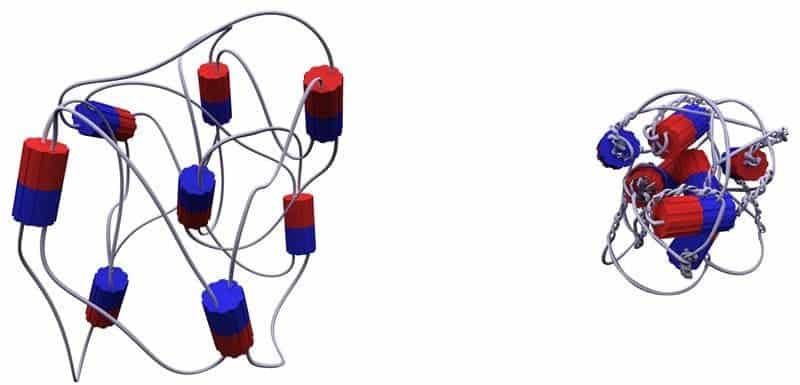Researchers at the Université de Strasbourg made a polymer gel that is able to contract similar to how a muscle concentrates motor proteins to elicit motion. The contraction occurs under the influence of light, but besides contraction, the gel also stores some of the absorbed light.
A gel battery

Muscles, like most living systems, perform functions at the macroscale through the collective molecular motion at the nanoscale. These molecular motors are highly complex protein assemblies that can produce work by consuming energy. For example, many protein-based molecular motors harness the chemical free energy released by the hydrolysis of ATP in order to perform mechanical work. Basically, these underlie all motion processes in biological systems (like the human body), but also work to copy DNA and synthesize proteins.
Individually, these molecular motors operate over an extremely short distance in the nano range. Yet, when millions join up they behave in a coordinate matter and collectively produce effects at the macroscale.
For a long while, scientists have been trying to mimic this behavior and produce artificial molecular motors. Undeterred by previous failed attempts, researchers at the Institut Charles Sadron, led by Nicolas Giuseppone, professor at the Université de Strasbourg, replaced a gel’s reticulation points, which cross-link the polymer chains to each other, by rotating molecular motors made up of two parts that can turn relative to each other when provided with energy. When light was shone, the artificial motors activated twisting the polymer chains in the gel, causing it to contract.
Just as in living systems, the motors consume energy in order to produce continuous motion. However, this light energy is not totally dissipated: it is turned into mechanical energy through the twisting of the polymer chains, and stored in the gel. But it’s not very much for now. According to the paper published in Nature Nanotechnology, the gel only converts 0.15% of the incoming energy into mechanical energy via contractions.
The plan is to exploit the gel somehow by finding a feasible way to extract the stored energy. Something like solar powered gel batteries, but it’s still very early to tell how this research will fair in the future.
Was this helpful?



